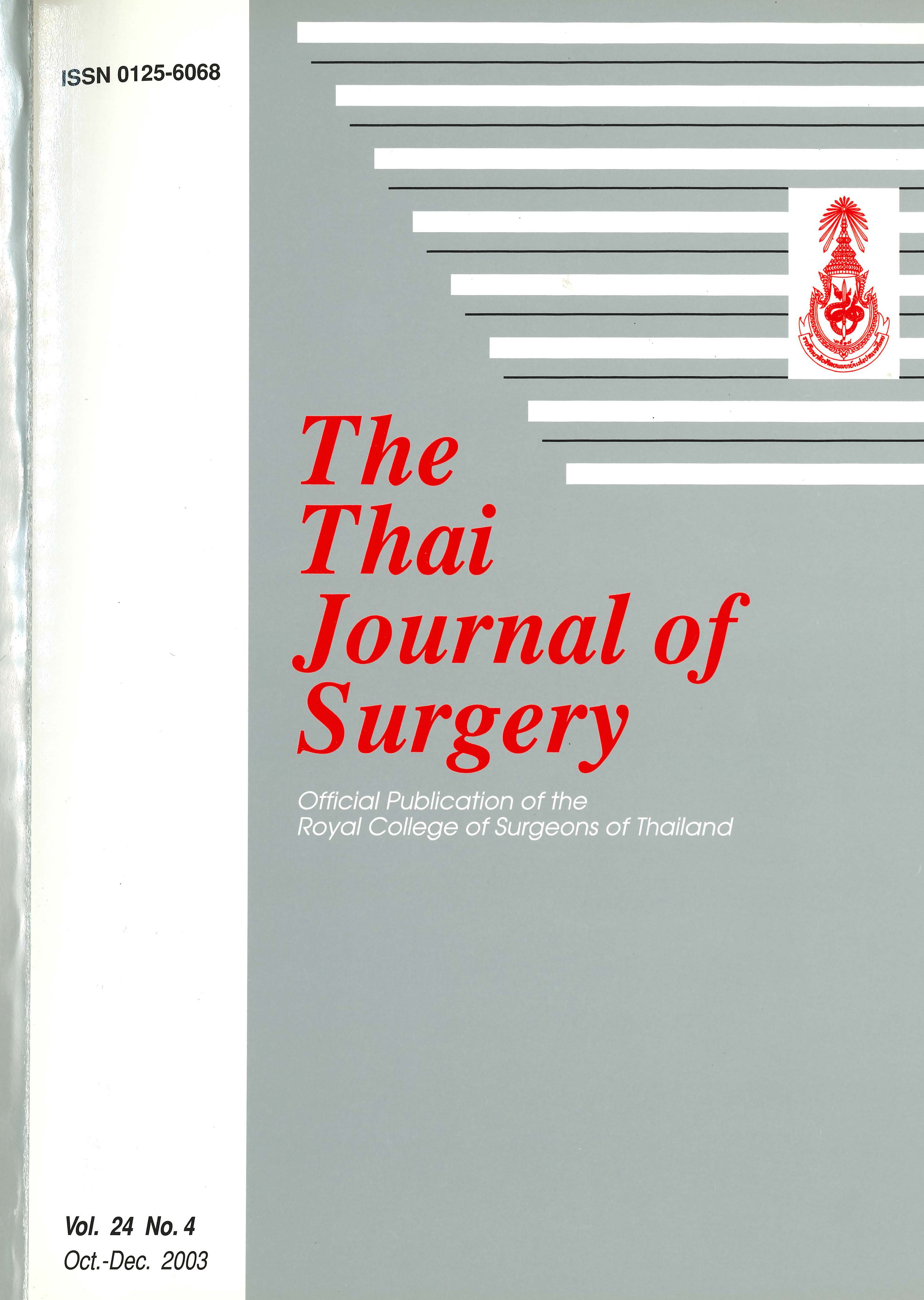The Amount of Bone Trabeculae Supporting Subchondral Plate of Talar Body and Femoral Head
Abstract
Background: It is believed that the density of subchondral bone including the subchondral plate and the amount of subchondral trabeculae influences the stability of the articular surface. The collapse of the articular surface in avascular osteonecrosis is initiated by the fracture of subchondral plate and subchondral bone trabeculae. The collapse of the femoral head is found more often than that of the talar dome. A previous study showed that the talar body has a higher compressive strength than that of the femoral head. However, besides the thickness of the subchondral plate, the amount of subchondral bone trabeculae may account for the higher prevalence of the collapse of the avascular osteonecrosis of the femoral head than that of the talar body.
Objective: To compare the amount of bone trabeculae which supports the subchondral plate of the femoral head with that of the talar body.
Design: Experimental study
Material and Methods: Femoral heads and bodies of tali were harvested from 14 cadavers. Weight-bearing areas of the specimens were randomly selected and studied histologically by the technique of decalcified eosin-hematoxylin. The amount of bone trabeculae supporting the subchondral plate were counted by using a micrometer under light microscope.
Results: The amount of bone trabeculae supporting subchondral plate of the right tali ranged from 5 to 8 columns per 250 micron (mode= 7) and of the left tali ranged from 5 to 8 columns per 250 micron (mode 6), The corresponding figures of the right and left femoral head were 4 to 7 columns per 250 micron (mode = 5) and 3 to 5 columns per 250 micron (mode = 4) respectively. Statistical analysis showed that the amount of bone trabeculae supporting the subchondral plate of talus is significantly more than that of the femoral head.
Conclusion: The amount of bone trabeculae supporting the subchondral plate of talus was more than that of the femoral head.
Relevance: The results of this study suggest that one of the reasons why the prevalence of the collapse of avascular necrosis of the femoral head is higher than that of the talar body.
References
2. Steinberg ME, Hayken GD, Steinberg DR. A quantitative system for staging avascular necrosis, J Bone Joint Surg Br 1995;77:34-41.
3. Jay RL, Daniel JB, Michael AM. Osteonecrosis of the hip: Management in the twenty-first century. J Bone Joint Surg 2002;84-A: 834-53.
4. Ohzono K, Saito M, Takaoka K, Ono K, Saito S, Nishina T, et al. Natural history of atraumatic avascular necrosis of the femoral head. J Bone Joint Surg Br 1991; 73: 68-72.
5. Norrdin RW, Kaweak CE, Capwell BA, Mcllwraith CW. Calcified cartilage morphometry and its relation to subchondral bone remodeling in equine arthrosis. Bone 1999;24:109-14.
6. Brown TD, Vrahas MS. The apparent of elastic modulus of the juxtarticular of the subchondral bone of femoral head. J Orthop Res 1984; 2: 32-8.
7. Murray RC, Vedi S, Birch HL. Subchondral bone thickness, hardness and remodeling are influenced by short-term exercise in a site-specific manner. J Orthop Res 2001; 19: 1035-42.
8. Aaron RK. Osteonecrosis: etiology, pathophysiology, and diagnosis. In: Callaghan JT, Rosenberg AG, Rubash HE, editors. The adult hip. Philadelphia: Lippincott-Raven; 1998. p. 451-66.
9. Juliano PJ, Myerson MS. Fractures of the hindfoot. In: Myerson MS, editor. Foot and ankle disorders. Philadelphia: WB Saunders; 2000. p. 1297-340.
10. Phimolsarnti R, Keyarapan E, Benjarassamerote S, Harnroongroj T. Local compressive strength at the middle of weight bearing surface of the femoral head and talar dome: a biomechanical study. Siriraj Hosp Gaz 2004;56:69-72.
11. Lecouvet FE, Van de Berge BC, Maldague BE. Early irreversible osteonecrosis versus transient lesions of the femoral condyles: prognostic value of subchondral bone and marrow changes on MR image. Am J Roentgenol 1998;170:71-7.
12. Simpkin PA, Heston TF, Downey DJ, Benedict RS. Subchondral architecture in bones of the canine shoulder. J Anatomy 1991;175:213-20.
13. Nakai T, Masuhara K, Nakase T, Sugano N. Pathology of femoral head collapse following transtrochanteric rotation osteotomy for osteonecrosis. Arch Orthop Trauma Surg 2000;120:489-92.
14. Steinberg ME, Bands RE, Parry S, Hoffman E. Does lesion size affect the outcome in avascular necrosis? Clin Orthop 1999; 367:262-71.
15. Kim YM, Ahn JH, Kang HS, Kim HJ. Estimation of the extent of osteonecrosis of the femoral head using MRI. J Bone Joint Surg Br 1998; 80: 951-8.
Downloads
Published
How to Cite
Issue
Section
License
Articles must be contributed solely to The Thai Journal of Surgery and when published become the property of the Royal College of Surgeons of Thailand. The Royal College of Surgeons of Thailand reserves copyright on all published materials and such materials may not be reproduced in any form without the written permission.



